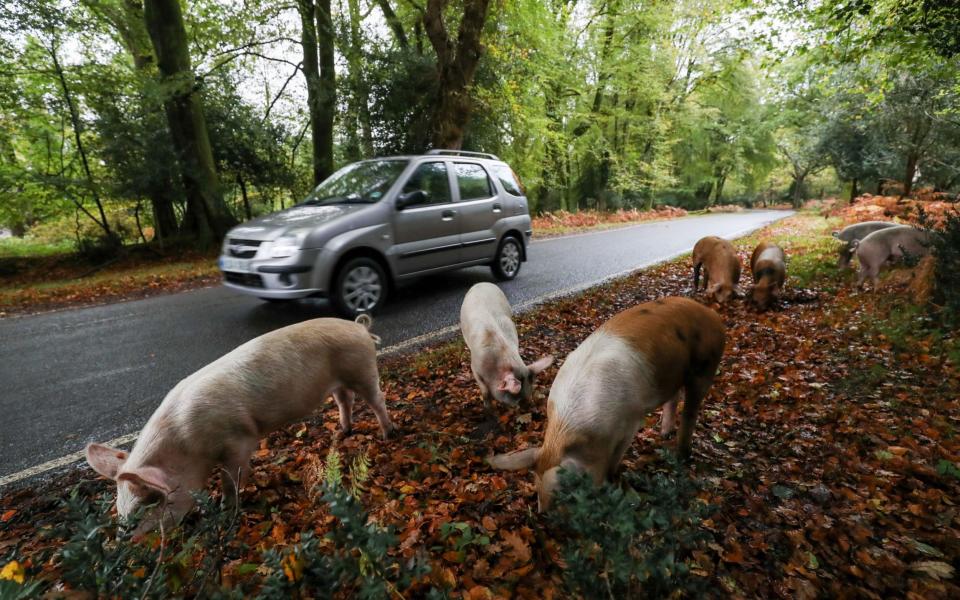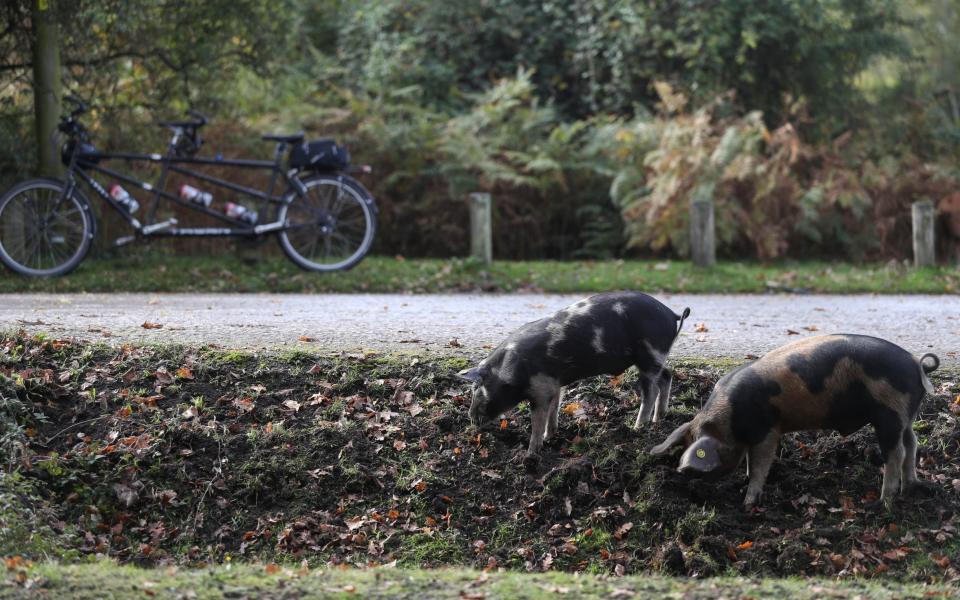Pannage season in ancient forest extended until Christmas amid bumper crop of acorns

The yearly pannage season in an ancient Hampshire forest has been extended until the Christmas period amid a bumper crop of acorns.
Pannage started on September 14 this year and normally lasts for about 60 days, although will now run until December 21 because of the volume of acorns.
An annual tradition since the time of William the Conqueror, the event sees hundreds of domestic pigs allowed to roam the 70,000-acre forest.
This is in order to clear the acorns, beechmast, chestnuts and other nuts which can be found on the floor of the New Forest, and can be poisonous to the ponies and cattle who have lived there for hundreds of years.
The verderers who manage the New Forest said that there has been a “particularly heavy” crop this year.

“As the acorns are still falling, it has been decided to extend pannage because they are very toxic to the New Forest ponies,” a spokesman said.
“We're not sure why recent years have seen such heavy crops but it is possible it has something to do with global warming.”
Pigs in the New Forest are also fattened up ahead of Christmas by pannage, a practice that has become almost extinct outside of the area, and top chefs believe that they produce some of the best ham in the world.
Because of the lack of domestic owners, only a few hundred pigs - estimated at around 600 - are now turned out for pannage, compared to around 6,000 pigs that were used in the nineteenth century.
All of the pigs which take part in the process have to be fitted with a ring in their nose, which enables them to forage through leaves and vegetation on the surface but prevents them from damaging the Forest with their snouts.
The pigs are thought to enjoy eating the acorns having spat out their toxic skins, and it is the only time of the year that they are allowed to ‘roam’ the open forest.
Pigs are only occasionally seen in the New Forest outside of pannage season, with special permission granted to breeding sows.

 Yahoo Finance
Yahoo Finance